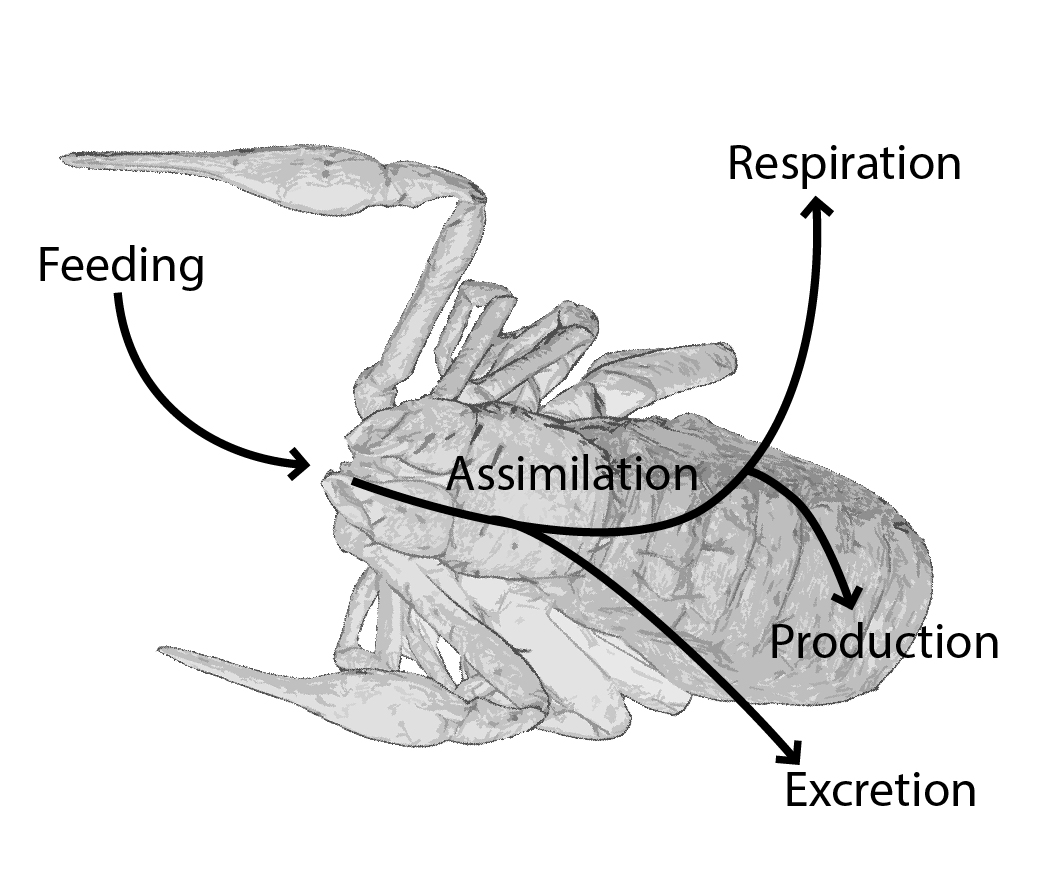Energetic implications of environmental warming
Submitted by editor on 15 August 2017. Get the paper!
Get the paper!Food webs are complex arrangements of interconnected species, with the food web of a specific ecosystem containing hundreds of species and thousands of interactions between them. From an energetics perspective, food webs can be viewed as networks of energy pathways in ecosystems with energy flows (i.e. biomass flows) between energy pools (i.e. the biomass densities of species, see figure 1). Warming directly accelerates chemical reactions and thereby alters biological processes fundamental to the energy distribution in food webs (e.g. respiration rates and feeding rates), thus affecting food-web stability and functioning.

Figure 1. Conceptual graph of the energy pathways in an ecosystem. Pictograms denote the different energy pools for aggregated consumer types (carnivores, detritivores, herbivores) and their resources (plants, detritus), the arrows between these pools represent the flows of energy (from resource to consumer). Plants and animals are connected to the detritus pool by natural mortality and excretion of undigested material.
As the world is continuously warming, we are in urgent need of a mechanistic understanding of how food webs react to changes in temperature. In our study, we followed the classical scheme of animal energetics (Figure 2) where the food consumed is partly assimilated and partly excreted as faeces. The assimilated energy becomes available for the organism’s life maintenance and activity (respiration) or for growth and reproduction (biomass production). How well energy is extracted from the food consumed is described by the assimilation efficiency (i.e. proportion of assimilation to consumption) which is a crucial element to understand the transfer of energy across trophic levels.

Figure 2. Conceptual graph of the energy budget for a consumer.
We first fill gaps in our knowledge on the allometric and temperature scaling of energy use (respiration) and on the efficiency of energy gain (assimilation efficiency) across consumer types (detritivores, herbivores and carnivores) by performing a meta-analysing of published studies on assimilation efficiencies and respiration rates. Our findings are then incorporated in a simulation of temperature effects on maintenance feeding rates, i.e. the energy consumption necessary to sustain life. By this, we show how the energetic requirements of organisms which have to be met for survival differ between consumer types and how they are changed by environmental warming.
The authors through: Birgit Lang